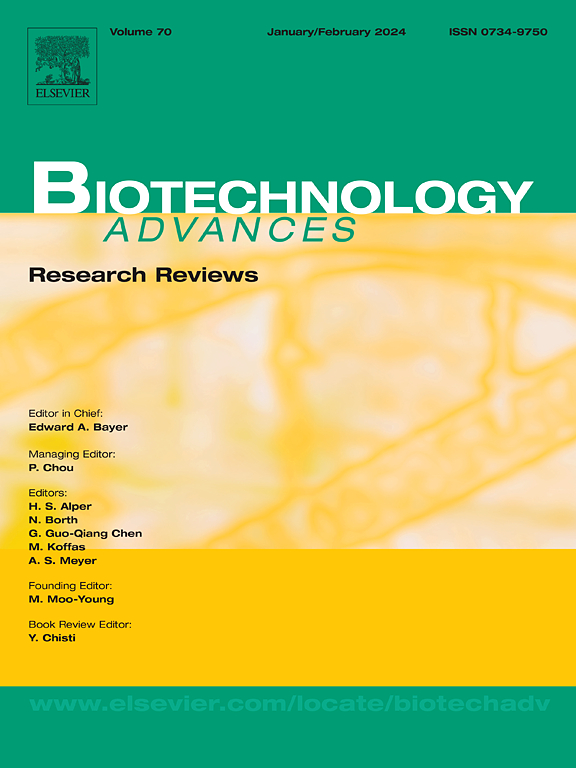Towards syngas biorefineries: The potential of microbial consortia for syngas valorisation
IF 12.5
1区 工程技术
Q1 BIOTECHNOLOGY & APPLIED MICROBIOLOGY
引用次数: 0
Abstract
Gasification has emerged as a promising platform to cope with recalcitrant organic waste within the framework of biomass-based biorefineries, producing syngas that can be fermented into valuable bioproducts. Despite its potential, syngas fermentation is based predominantly on pure cultures, which faces significant challenges, including the limited portfolio of generated compounds (primarily acetate and ethanol) and their low productivity. To address these bottlenecks, the potential of microbial consortia as effective platforms for syngas conversion has been evaluated. Syngas biomethanation using mixed cultures is a well-established process, with pilot-scale implementations yielding promising results. Alternatively, the production of carboxylic acids has emerged as an interesting option compared to pure cultures, as comparable acetate productivities can be achieved along with the possibility for chain elongation to butyrate or caproate. However, the feasibility of using mixed cultures to produce alcohols and other high-value compounds from syngas remains underexplored. Advancing the field will also require the development of innovative technologies to overcome inherent barriers and fully unlock the potential of syngas-based bioprocesses. Key challenges include the presence of impurities and variability in syngas composition, mass transfer limitations in bioreactors, and the need for efficient downstream effluent purification. In this context, mixed cultures emerge as a robust approach capable of buffering syngas fluctuations and tolerating certain impurities. At the same time, the development of novel gas phase bioreactors and innovative membrane-based systems for effluent purification is crucial for enhancing CO and H2 mass transfer and improving products titers, respectively.
迈向合成气生物精炼厂:微生物联合体对合成气增值的潜力。
气化已经成为一个有前途的平台,可以在生物质生物精炼厂的框架内处理顽固的有机废物,产生可以发酵成有价值的生物产品的合成气。尽管合成气发酵具有潜力,但它主要基于纯培养物,这面临着重大挑战,包括产生的化合物(主要是醋酸酯和乙醇)组合有限,生产率低。为了解决这些瓶颈,微生物联合体作为合成气转化的有效平台的潜力已经被评估。使用混合培养的合成气生物甲烷化是一个成熟的过程,中试规模的实施产生了有希望的结果。另外,与纯培养物相比,羧酸的生产已经成为一个有趣的选择,因为可以实现相当的醋酸酯产量,并有可能将链伸长为丁酸盐或己酸盐。然而,利用混合培养从合成气中生产酒精和其他高价值化合物的可行性仍未得到充分探索。推进该领域还需要开发创新技术,以克服固有障碍,充分释放基于合成气的生物工艺的潜力。主要挑战包括合成气成分中存在杂质和可变性,生物反应器中的传质限制,以及对高效下游污水净化的需求。在这种情况下,混合培养成为一种强有力的方法,能够缓冲合成气波动和容忍某些杂质。与此同时,新型气相生物反应器和新型膜基系统的开发对于增强CO和H2的传质以及提高产品滴度至关重要。
本文章由计算机程序翻译,如有差异,请以英文原文为准。
求助全文
约1分钟内获得全文
求助全文
来源期刊

Biotechnology advances
工程技术-生物工程与应用微生物
CiteScore
25.50
自引率
2.50%
发文量
167
审稿时长
37 days
期刊介绍:
Biotechnology Advances is a comprehensive review journal that covers all aspects of the multidisciplinary field of biotechnology. The journal focuses on biotechnology principles and their applications in various industries, agriculture, medicine, environmental concerns, and regulatory issues. It publishes authoritative articles that highlight current developments and future trends in the field of biotechnology. The journal invites submissions of manuscripts that are relevant and appropriate. It targets a wide audience, including scientists, engineers, students, instructors, researchers, practitioners, managers, governments, and other stakeholders in the field. Additionally, special issues are published based on selected presentations from recent relevant conferences in collaboration with the organizations hosting those conferences.
 求助内容:
求助内容: 应助结果提醒方式:
应助结果提醒方式:


